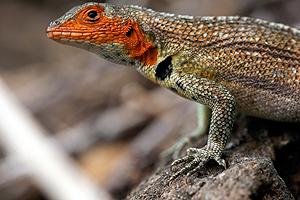
Flora and Fauna
Flora
 Ecuador has 10 percent of all of the planet’s plant species. Of this total, the largest number is found in the Andes Mountains, in the northwest region, where approximately 10000 species are estimated to be found. In the Amazon region, there is also a high number of plant species, around 8200; for example, 2725 species of only orchids have been identified. In Galapagos, however, there are approximately 600 native species and 250 introduced species. Of the 12 most important biodiversity areas identified by the naturist Norman Myers, three are located in mainland Ecuador. The country’s 25000 species of trees can be accredited to its climatic diversity.
Ecuador has 10 percent of all of the planet’s plant species. Of this total, the largest number is found in the Andes Mountains, in the northwest region, where approximately 10000 species are estimated to be found. In the Amazon region, there is also a high number of plant species, around 8200; for example, 2725 species of only orchids have been identified. In Galapagos, however, there are approximately 600 native species and 250 introduced species. Of the 12 most important biodiversity areas identified by the naturist Norman Myers, three are located in mainland Ecuador. The country’s 25000 species of trees can be accredited to its climatic diversity.
Fauna
 Ecuador has eight percent of the planet’s animal species and 18 percent of its bird species. Nearly 3800 species of vertebrates, 1550 of mammals, 350 of reptiles, 375 of amphibians, 800 of freshwater fish and 450 of saltwater fish have been identified. It also has about 15 percent of all endemic bird species in the world, which principally live in the Andes, the Coast and the Amazon region. Insect species exceed one million and butterflies species exceed 4500, among others.
Ecuador has eight percent of the planet’s animal species and 18 percent of its bird species. Nearly 3800 species of vertebrates, 1550 of mammals, 350 of reptiles, 375 of amphibians, 800 of freshwater fish and 450 of saltwater fish have been identified. It also has about 15 percent of all endemic bird species in the world, which principally live in the Andes, the Coast and the Amazon region. Insect species exceed one million and butterflies species exceed 4500, among others.
Ecosystems
Ecosystems ranging from sea level to about 6400 meters high are found in the country. Its total mainland area is 14583227 hectares. There are 46 ecosystems that integrate moorlands, forests, valleys and the Pacific Ocean, located in different climatic zones. One of the most biodiverse ecosystems is that of the tropical rain forest, with large trees and many different species, and a multitude of plants, flowers, mammals, reptiles, birds, invertebrates, fish and amphibians.
National Parks and Reserves
Ecuador has ten national parks, 14 natural reserves, a wildlife refuge and recreation area, which are considered to be natural heritage sites and spaces protected by the State. Totalling approximately 4669871 hectares of land and 14110000 of sea surface, these protected areas are divided between the four regions. Biodiversity is the main wealth of these areas, though they are also inhabited by both urban and rural populations.
The Pacific Coast has a rainy season that lasts from December to May and a dry season that lasts from June to November. The temperature ranges from 23 to 26 degrees Celsius.
The weather in the mountains, however, is rainy and cold from November to April and dry from May to October. Temperatures range from 13 to 18 degrees Celsius.
In the Amazon, the weather is rainy and humid between January and September, with temperatures between 23 and 36 degrees Celsius, and dry between October and December.
The Galapagos Islands have a temperate climate with temperatures ranging between 22 and 32 degrees Celsius.

















